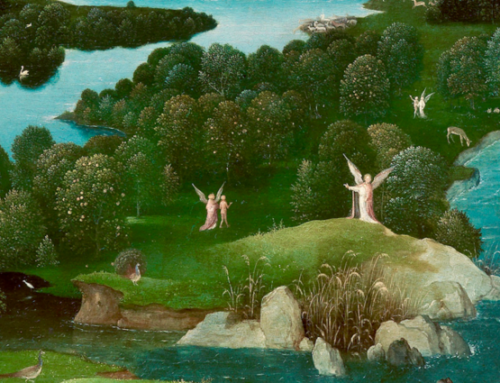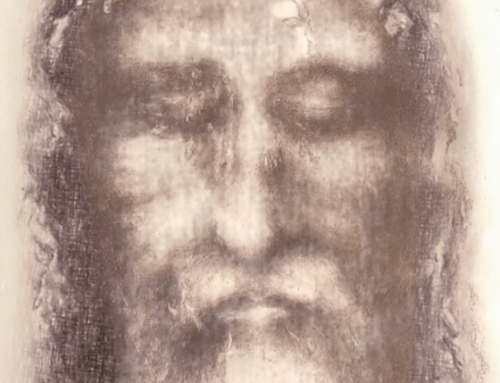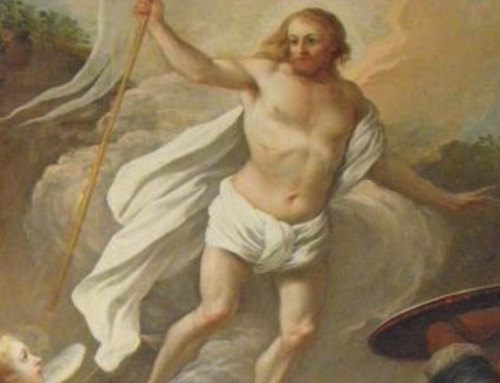The struggles of T.S. Eliot’s personal life continue to fascinate both his critics and admirers. Eliot was frustrated and wounded in love, and the women in his life thus assume mythical proportions, as if his life and literature have become a unified drama.
Eliot married Vivienne Haigh-Wood the flighty, unstable dancer in his haste of 1919. He was young and prudish, she was wildly vivacious and beautiful, and it was not long before the mismatch became obvious. Did he refer to it in The Waste Land as he recalled “the awful daring of a moment’s surrender which an age of prudence can never retract?”
For Eliot, Vivienne was a harpy. Flighty like the wind, with wings of flame, and claws that catch she stalked him in person and haunted his imagination after their separation. Consigned to an asylum by Eliot and her brother, she lingered like a foul revenant in Eliot’s The Family Reunion. Was Vivienne the doomed wife that the protagonist felt certain he had pushed overboard? Did Vivienne haunt the play further as the Eumenides—the Furies—the vengeful female spirits of the underworld that The Iliad describes as “those who beneath the earth punish whosoever has sworn a false oath?”
Eliot may have seen his hasty marriage to Vivienne not only as a personal disaster, but also as a moral misstep of catastrophic and cursed proportions—dooming both parties to decades of self recrimination, blame, and guilt.
All was to be reconciled in Eliot’s marriage to Valerie Fletcher. Fletcher described how she had been enchanted by Eliot’s verse from the age of fourteen, and how she knew she had to “get to Tom.” In this fascinating memoir by her former editorial assistant, Valerie Eliot recounted how she became Eliot’s secretary, moved to live near him, joined his church, and eventually married.
If Vivienne was the furious harpy, Valerie was the Hestia of hearth and home. With Valerie he achieved a happy marriage, secure love, and a protecting spirit. Valerie Eliot nurtured Eliot in his final years and photographs of the two together show the usually poor, tortured, dour poet beaming from ear to ear—happy at last.
Between the harpy Vivienne and the hestia Valerie stood a third important woman in Eliot’s life, who remained an enigmatic Beatrice-like figure. Eliot met Emily Hale in 1913 while he was a student at Harvard. He was taking part in a home-grown evening of amateur dramatics playing (like a prescient Prufrock) Mr. Woodhouse in an adaptation of Jane Austen’s Emma; Emily played the pompous vicar’s wife, Mrs. Elton.
Emily Hale’s father was an Unitarian minister. She wanted to be an actress, but that profession deemed below the Boston Brahmin society, she wound up being a drama teacher. Eliot’s biographers believe that the two had a romance at that stage. Charting the biographical milestones, some believe she was the inspiration for Eliot’s early poem La Figlia Che Piange, which is a reverie for a lost love—a young woman who was rejected.
Eliot and Hale stayed in touch after he moved to England. He sent her a copy of his book of poetry. She visited London several times in the 1920s. Did they meet? It seems probable. Was she a Beatrice figure: the idealized beauty and the love that was never to find earthly fulfillment? In 1927, after thirteen years of miserable marriage to Vivienne, Eliot and Hale re-established regular contact. She visited him in England, and whenever he crossed the Atlantic, he always spent time with Miss Hale. The girls in the college where she taught would anticipate the regular visits of their drama teacher’s august friend from England and gossiped about their relationship.
In the 1930s Hale took a sabbatical from her teaching post and travelled to Europe, perhaps believing that Eliot would marry her. By this time, although incarcerated, Vivienne was still living and Eliot could not countenance divorce or re-marriage. Consequently, Emily returned to Boston and drifted into depression. They continued to visit, however, and Eliot admitted that he was in love with her during this time.
During her visit to England in the early thirties, she and Eliot visited Burnt Norton, the abandoned manor house in the Cotswolds. It was a mystical encounter that sparked the poignant reflections on a lost innocence, time wasted and a relationship that might have been. So he writes:
Footfalls echo in the memory
Down the passage which we did not take
Towards the door we never opened
Into the rose-garden. My words echo
Thus, in your mind.
For more than another decade Vivienne languished in a mental hospital, finally dying in 1947. Eliot was free to marry Emily, but it never happened. She wrote to a friend to explain, “We met privately two or three times to try to sift the situation as thoroughly as possible—he loves me—I believe that wholly–but apparently not in the way usual to men less gifted i.e. with complete love thro’a married relationship. I have not completely yet given up hope that he may yet recover from this—to me—abnormal reaction, but on the other hand I cannot allow myself to hold on to anything so delicately uncertain.”
Karen Christenson, who worked for Valerie Eliot, discovered the poet’s account of his separation from Emily Hale: “Eliot and his sister were sitting at breakfast on a porch overlooking the Atlantic. Hale was staying nearby. Eliot said he was going to walk over after breakfast and ask Hale to release him from the promise that they would marry when he was free—then Eliot added, “If she refuses, I shall have to kill myself.”
The break was also devastating for Hale. When Eliot suddenly married Valerie Fletcher ten years later, Emily Hale had a severe breakdown and had to be hospitalized.
T.S. Eliot once told the story of meeting a young writer on board a transatlantic liner. The man rushed up enthusiastically and proclaimed to Eliot that he wanted to be a great poet. Eliot discouraged him, asking why anyone would want to embark on such a life of agony. In many ways Eliot’s misery seems to have been self-inflicted. An agonized, sensitive, and struggling soul, he was much wounded in love and, it must be admitted, much wounding. But out of this cauldron of misplaced love, frustrated passion, and self-doubt came a final resolution and gigantic poetic masterpieces that have transformed Western culture.
Books on the topic of this essay may be found in The Imaginative Conservative Bookstore.








Please keep these coming. I really enjoy them.
I second Mr. Cheeks here. Eliot’s works are dense with meaning, and therefore challenging. These insights into the personal travails that inspired them are invaluable.
I was aware of Eliot’s first wife and their issues and the love he found with his second wife. I had not known (never having read an Eliot biography) much about Emily Hale, though I had heard of her. Thanks for this wonderful essay.
Lyndall Gordon’s 2 volumes of Eliot biography are excellent on Eliot and Hale. I also believe Eliot disappointed another woman, who believed marriage might result from their relationship in the 40s, Mary Trevelyan.